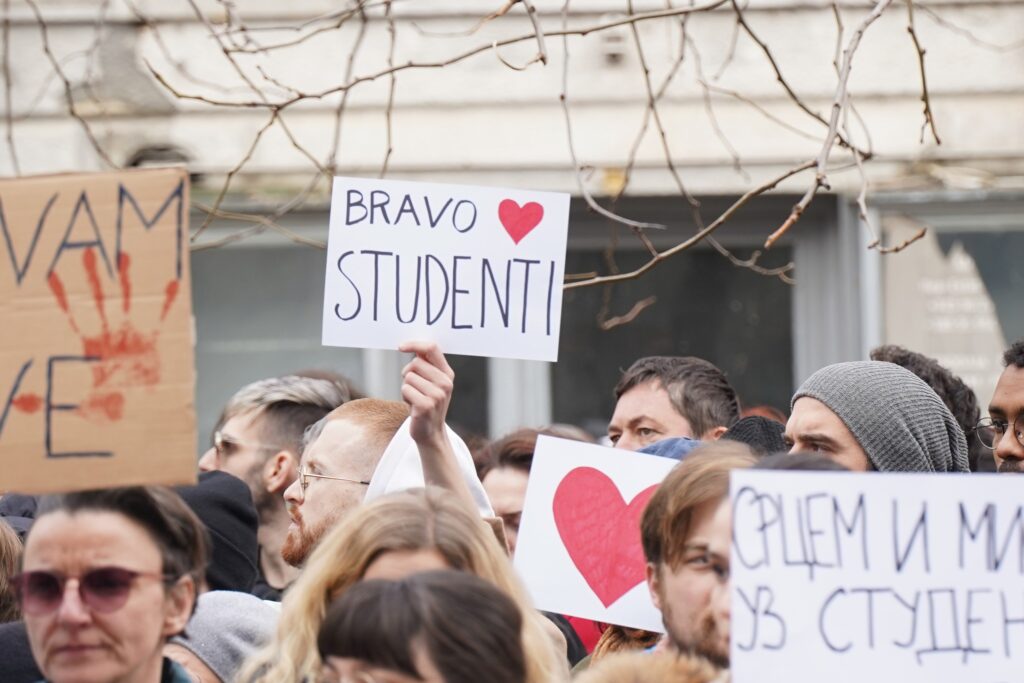The individualism of the younger generation, shaped by the collapse of traditional forms of social control, has led to a culture in which people are increasingly self-focused and less concerned about the well-being of others. The breakdown of traditional values has been accompanied by a decline in collective responsibility and a retreat into private life. Such a statement could easily be attributed to any contemporary pessimist or, perhaps more aptly, a future one. The apathy of young people, all-encompassing conformism, and a defeatist apolitical stance are the fundamental characteristics of generations born and shaped in the 21st century. Not only would pessimists agree with this claim, but so would nearly everyone else, save for a few radical optimists. This assertion would have met with universal approval had it been made, say, on the morning of November 1, 2024. But November 1, 2024, has passed. It has passed only as a day, as a temporal sequence. In the collective consciousness of Serbian students and other citizens, it continues to resonate and will persist even when the events fade, serving as a guiding light for the future.
The statement at the beginning of this text does not come from the mouths of today’s sceptics and pessimists. Given its relevance, it is astonishing to think that it will soon celebrate half a century of existence. Its author, Christopher Lasch, in his 1979 book The Culture of Narcissism, critiques contemporary American society, where cultural foundations rooted in consumerism, individualism, and personal gratification raise new generations incapable of understanding collective well-being and its long-term goals. We might agree that new generations in post-Yugoslav republics have been formed on the same principles, albeit with certain cultural differences. We might continue to agree if not for the fact that the year 2025 has arrived.
It is January 5. Montenegrin students, gathered under the informal organization “Where to Tomorrow,” hold a protest in front of the Ministry of Interior in Podgorica. The reason: the massacre in Cetinje on January 1, 2025, in which 13 people, including the perpetrator, lost their lives. According to some estimates, around five thousand citizens gathered at the protest, demanding the resignation of the Minister of the Interior and the Deputy Prime Minister, whom they held responsible for police failures during the event in Cetinje.
It is February 10. In front of the Parliament building of Bosnia and Herzegovina in Sarajevo, several thousand citizens have gathered at the call of an informal student group. They are protesting against corruption, that powerful and all-encompassing octopus whose tentacles are directly responsible for the collapse of a quarry in Donja Jablanica, which claimed 27 lives.
It is February 17. The 219th plenum of the Faculty of Humanities and Social Sciences is being held in Zagreb. Students are protesting against the university administration’s decision to charge ECTS credits for their thesis work in their additional (post-nominal) year. Although their demands mainly focus on university policies, there is a growing tendency to embrace broader social and political issues, linking with students from other faculties.
It is March 17. Precisely at noon, on the plateau in front of St. Cyril and Methodius University in Skopje, students pay tribute to the victims of the nightclub fire in Kočani, which claimed 59 lives. Protests are being considered. The reason: the same one that led to the catastrophe in Bosnia and Herzegovina—pervasive corruption and institutional negligence, from which North Macedonia has not remained immune.
There are numerous reasons for student gatherings in the capitals of post-Yugoslav republics. All are driven by the idea of fighting for a better and fairer society, whether it concerns the commercialization of education, security, or corruption. Yet, students from universities in Zagreb, Sarajevo, Podgorica, Skopje, and, lest we forget, Ljubljana have not assembled solely due to problems within their own countries. They have gathered for a much more significant reason. They have come together to support their colleagues in Serbia. The very same ones who have been tirelessly protesting for months, demanding that the authorities release documents related to the reconstruction of the canopy whose collapse resulted in the death of 15 people in Novi Sad on November 1, 2024. The very same documents that could unravel the web of corruption extending to the highest echelons of Serbian society, including its president.
What has been unfolding in Serbia over the past few months has not yet been given a recognized name as a historical event. We are not even sure what broader significance this event will hold in history. What we do know for certain is that the series of events marking the end of 2024 and the beginning of 2025 will be regarded as one of the turning points in Serbian history, and likely beyond. We also know for certain that, despite bleak predictions regarding 21st-century generations, student movements have retained a strong mobilizing force capable of articulating their demands on a large scale through direct-democratic methods.
But what is it about student movements that makes them so compelling? What has enabled students—those inexperienced, some might say naïve young people—to ignite one of the most significant waves of protests seen in the former Yugoslav region in recent decades? To answer this question, we must go back a little in history, specifically to the early 20th century.
By the early 20th century, many scientists, social theorists, and artists had already realized that human identity, due to rapidly accelerating technological, social, and cultural changes, was becoming unstable and fragmented. The painter Jean Metzinger, for instance, understood this, as evidenced in his artwork The Cyclist, which portrays an identity disintegrated by the speed of modern times. The inability to construct fixed points of identification and the fragmentation of our personality have reached their peak in the early 21st century, with the advent of the digital age and the pervasive technologization of everyday life.
In such a world, students emerge as one of the few social groups whose movements can be activated on a broad scale. This is largely due to the unique experience of studying and the social status that students hold. Unlike the rest of society, students possess a specific form of organizational identity that ties them not only to their social status but also to the institution to which they belong. Thus, despite the apparent passivity of new generations, the specter of 1968 looms and will continue to loom as long as there are students.








